Ungulates place immense consumptive pressure on forest vegetation globally, leaving legacies of reduced biodiversity and simplified vegetative structure. In their latest research, Samuel Reed and colleagues sought to determine whether browse-induced changes occurring early in succession ultimately manifest themselves in the developed forest canopy.
Herbivores are incredibly influential around the world and can re-shape entire ecosystems over time. In North American temperate forests, white-tailed deer are of particular interest as their populations have risen dramatically over the last century.
In a forest ecosystem, deer eat the plants that taste good and leave behind those that do not, similar to when they invade a home garden. After several decades of intense deer browse, a forest can suffer reduced biodiversity and largely be composed of plants that deer do not like to eat. Certain herbaceous species, such as white-flowered trillium, can even be driven to local extinction as the result of too many deer on a landscape.
In our study, we set out to determine if the changes in species composition caused by deer may, in turn, be altering other aspects of the forest. For example, a change in species composition may lead to a change in the structure and arrangement of leaves and branches in the canopy. Canopy structure is closely linked with wildlife habitat, along with carbon sequestration and many other ecological functions.
Deer Impact on the Forest Canopy
To determine if deer can influence canopy structure, we used a deer enclosure experiment on the Allegheny Plateau of North-Central Pennsylvania that was operational in the 1980’s. Four 65-ha deer enclosures were built in distant counties, with each enclosure subdivided to establish experimental deer populations of 4, 8, 15, and 25 deer/km2.
These deer densities were maintained for roughly ten years, with all fencing removed in 1990. Within each density treatment, there was a clearcut section where deer had direct influence on all regenerating vegetation – this is where we conducted our study. This unique setup allowed us to see if differences in deer browse during the early years of forest stand establishment would lead to lasting changes in canopy structure.
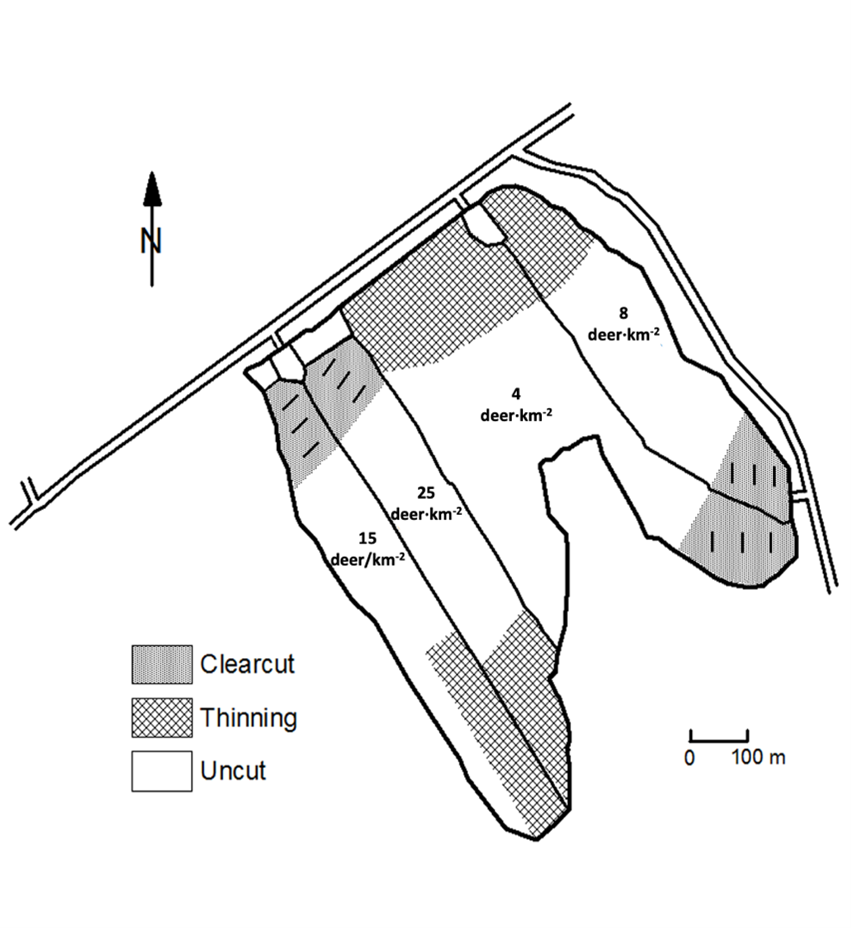
In 2016, nearly four decades after the enclosure experiment was initiated, we used both traditional field methods and a new remote sensing tool, the portable canopy LiDAR, to quantitatively describe the canopy of each deer density treatment. The portable canopy LiDAR is worn by an operator, pointed towards the canopy, and walked slowly along a transect. The device shoots thousands of lasers upwards, which then bounce off leaves and branches back towards a receiver that records the amount and height of plant material overhead.
By focusing on the former clearcut treatments, we ensured that the now mature overstory had been directly impacted by deer during the experiment and best represented the legacy that deer can have on the eventual forest. Indeed, the legacy of deer was so pervasive that we found strong connections between deer density and canopy diversity and structure.
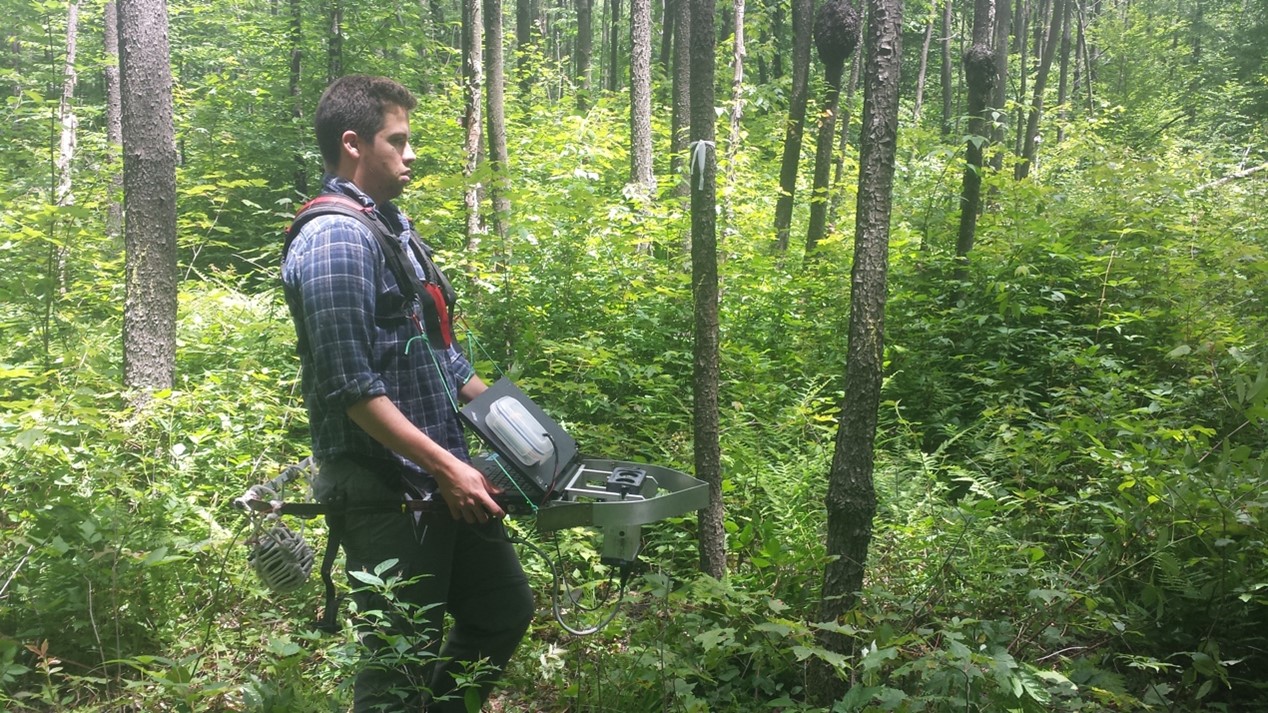
The highest deer densities caused a substantial decrease in tree species diversity, with stands dominated by black cherry (P. serotina), which is highly unpalatable to deer due to its high cyanide content. The black cherry stands in the experiment, almost savanna-like in nature, tended to have understories with high amounts of hay-scented fern (D. punctilobula) and a few scrawny trees in both the understory and overstory.
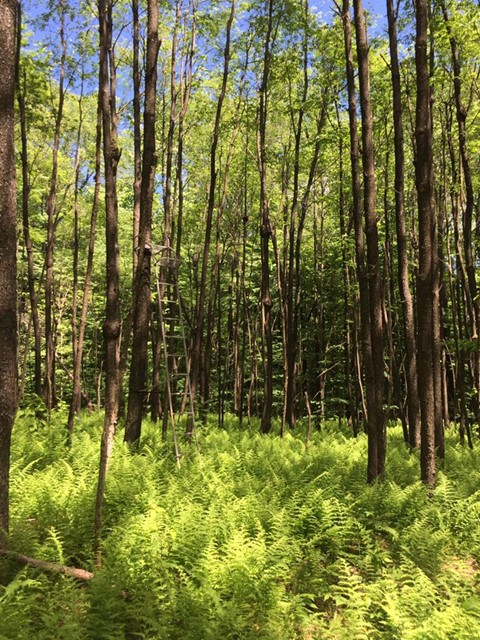
Deer caused losses in tree diversity, density, and basal area, which led to canopies that were more open (Fig 4). Interestingly, high deer density stands also had higher horizontal canopy complexity, which is linked to greater carbon sequestration and wildlife habitat. However, while these high deer density stands do have greater horizontal complexity, our research also shows they have much lower aboveground carbon and others have found diminished bird and caterpillar populations at these sites.
Stands in both the lowest and highest deer density treatments were also generally taller, as two tall tree species had an advantage at each end of the deer density spectrum – Namely palatable pin cherry (P. pensylvanica) at 4 deer/km2 and unpalatable black cherry at 25 deer/km2.
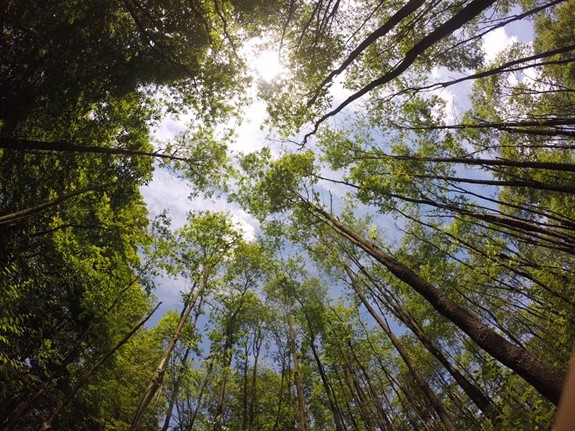
What are the management implications of deer changing canopies?
Our study shows that deer can change plant species composition, which subsequently alters long-term forest biodiversity, stand structure, and canopy structure, all of which are particularly important in maintaining healthy and functional ecosystems. The influence of deer on critical stages of forest development, like stand establishment in this experiment, can change the trajectory of canopy structure and ecosystem function for decades.
As remote sensing of the canopy becomes more prevalent, consideration of links between ungulate herbivores and canopy structure may better inform land management decisions. Further, a detailed record of changes in canopy structure in ecosystems with heavily managed herbivore populations could serve as an indicator of both ecological function and management success. A holistic view of how herbivores change forest ecosystems will be critical to management and maintenance of ecological function into the future.
Read the full paper The long-term impacts of deer herbivory in determining temperate forest stand and canopy structural complexity in Journal of Applied Ecology.
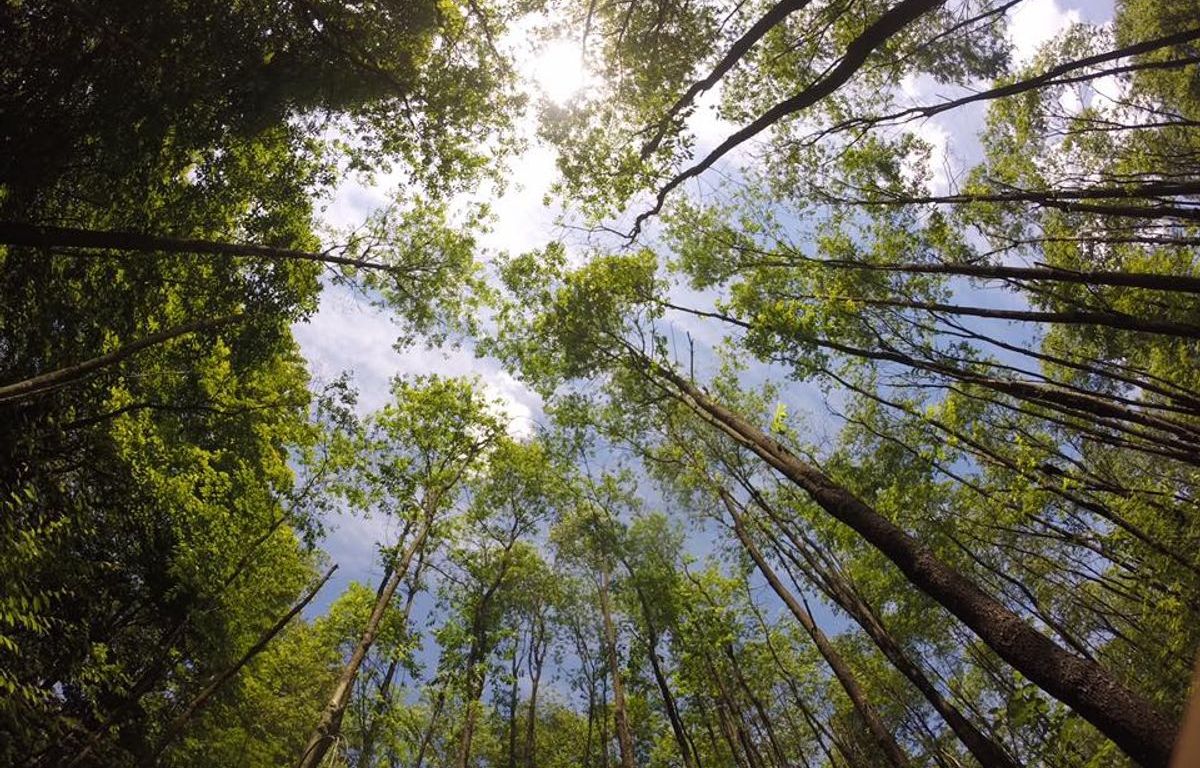
Connection between deer and the forest canopy is extraordinary. Thank you 😊🌍
LikeLike